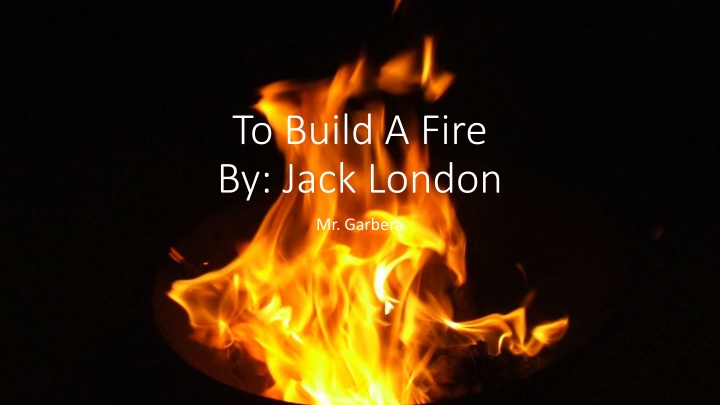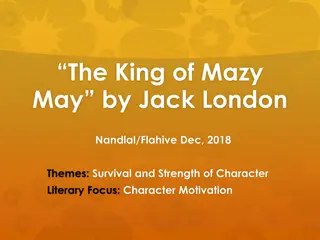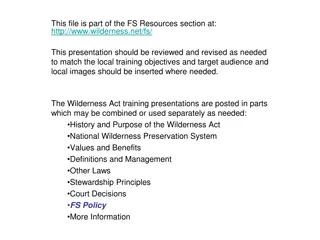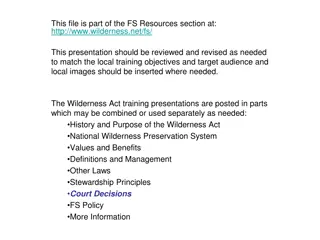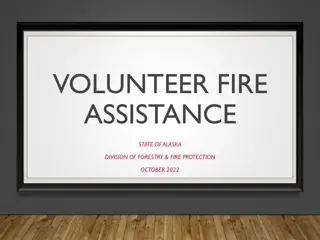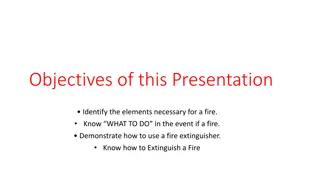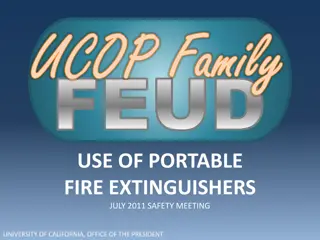Peril in the Alaskan Wilderness: A Review of "To Build A Fire" by Jack London
A man and his dog journey through the harsh Alaskan terrain where tragedy strikes when the man underestimates nature's power. London delves into the protagonist's psyche and the dog's role, weaving a tale of survival and the brutal indifference of the wilderness.
Download Presentation

Please find below an Image/Link to download the presentation.
The content on the website is provided AS IS for your information and personal use only. It may not be sold, licensed, or shared on other websites without obtaining consent from the author.If you encounter any issues during the download, it is possible that the publisher has removed the file from their server.
You are allowed to download the files provided on this website for personal or commercial use, subject to the condition that they are used lawfully. All files are the property of their respective owners.
The content on the website is provided AS IS for your information and personal use only. It may not be sold, licensed, or shared on other websites without obtaining consent from the author.
E N D
Presentation Transcript
To Build A Fire By: Jack London Mr. Garbera
Synopsis A man is traveling in the woods on the Alaskan border. He is traveling with a dog only. He falls through ice and gets his feet wet. He builds a fire to warm his feet. The man s body is slowly becoming numb, especially his hands. Just as he is about to dry his feet, snow falls on his fire. He is unable to build a new fire. The man eventually freezes to death.
Character London goes deep into the mind of the protagonist in his character. He also gives us insight into the mind of the dog. The man sees the dog as a tool and the feeling is reciprocated by the dog. This is London s attempt to show us that Nature is indifferent to the well being of man.
Mann The man is overconfident and stubborn. He chooses to not see the warning signs. The dog, who is a native of the land, demonstrates its uneasiness with the man s choices. He is given advice from the old man at Sulphur Creek, which he ignores. It is not until the end of the story that he comes to the realization that the old man was right. That man from Sulphur Creek had spoken the truth when telling how cold it sometimes got in the country. And he had laughed at him at the time. (Pearson Text, 602)
Dog The man sees the dog as a tool and the feeling is reciprocated by the dog. So the dog made no effort to communicate its apprehension to the man. It was not concerned in the welfare of the man; it was for its own sake that it yearned back toward the fire. (Pearson text, 602)
Detail The story goes into great detail, trying to capture the process of freezing to death. London describes how the man is slowly losing control of his body. After a time he was aware of the first faraway signals of sensation in his beaten fingers. The faint tingling grew stronger until it evolved into a stinging ache that was excruciating, but which the man hailed with satisfaction. (Pearson Text, 606)
Regionalism To Build a Fire consistently gives great detail about the setting of the Alaskan border. London goes into great detail to show the deception of the ice traps. It also goes into great detail about the lack of resources to build a fire. This detail provides the reader with insight into the external conflict. North and south, as far as the eye could see, it was unbroken white, save for a dark hairline that curved and twisted from around the spruce-covered island to the south, and that curved and twisted away into the north, where it disappeared behind another spruce-covered island. (Pearson text, 597) He drew the lower jaw in, curled the upper lip out of the way, and scraped the bunch with his upper teeth in order to separate a match. (Pearson text, 606)
Naturalism London was a Naturalist and he uses many Naturalist ideas in To Build a Fire including: Natures indifference towards humans Humans inability to control their destiny Nature is cruel Ordinary protagonist Real life situation
Conflict London uses Dramatic Irony to enhance his conflict. He provides the reader with information that the character does not know like the actual temperature as opposed to what the man thinks the temperature is. London uses both an external and internal conflict to tell his story.
External Man vs. Nature The man s main enemy in the story is nature. He must overcome its obstacles. The man underestimates nature, and this leads to his demise.
Internal The man has several internal conflicts. These conflicts arise when he is beginning to believe that he might not survive this journey. He first struggles with the idea of hope vs. the acceptance of his death. Once he has lost hope, he begins to struggle with how he should die. Well, he was bound to freeze anyway, he might as well take it decently. (Pearson text, 609)
